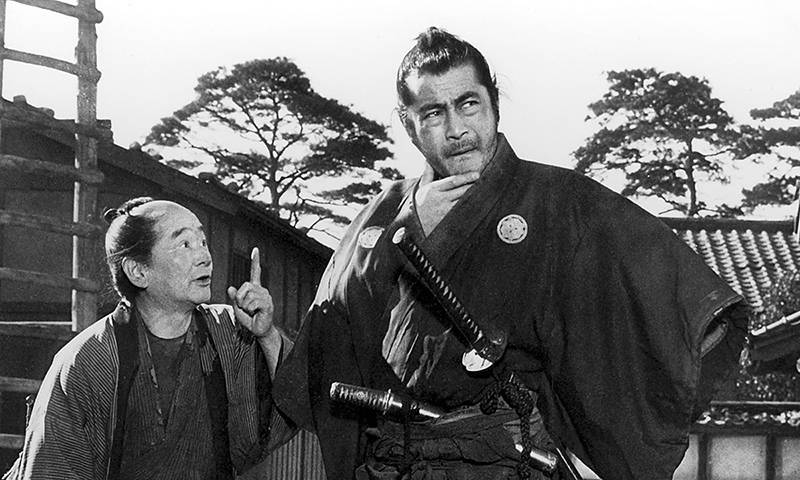Article by By Jazmin Justo
The Japan Society hosted the NY Premiere of the new documentary “Mifune: The Last Samurai” embarking an incredible journey of the director Steven Okazaki, in rediscovering the actor that defined the golden age of Japan’s cinema, Toshiro Mifune. Toshiro Mifune has been featured in over 170 films but his most famous performances is his leading roles in director Akira Kurosawa’s films such as “Seven Samurai”, “Rashomon” and “Yojimbo”.
The documentary first begins with defining the meaning of samurai films before 1941 and after 1945. Before 1941, samurai films were based on Noh theatre and folk stories, often featuring sword fights as dances called “chanbara”. In an interview with Japan’s most iconic film critic and scholar, Tadao Sato, he explained the history of samurai films using a few clips of silent films that were partially recovered from that era. He explained that often times, the main lead was a ronin who fought against incredible odds and often lost the battles but fought with dignity and a sense of justice. The ronin was considered a classic anti-hero trope, a vagabond with good morals but marginalized in society. After 1945, Japan was exposed to new cinema technology and thus black and white films with sound became popular. During this time, Toshiro Mifune after serving as a soldier during WWII, signed up for work as a camera assistant. Due to his experience at his father’s camera shop, he served as a great help to the crew. However, it was during the “New Faces” auditions hosted by Toho Productions that he attracted the attention of directors. One of the directors, Akira Kurosawa, offered Toshiro a role in an experimental film, which later skyrocketed to fame, “Rashomon”. Mifune never had formal training but nonetheless dedicated himself entirely to memorizing the script and practicing body movements and expressions. The experimental film was very different from traditional samurai stories. The bandit played by Mifune was free-spirited and wild with emotion. His charm and intense character redefined the anti-hero trope. The film also featured a more realistic combat and a complex narration. Each character offered a different perspective on the same incident, which is different from uniform story telling that only focuses on the point of view of one main character or outside narrator. Moreover, actresses actually played a part in the film unlike in traditional Noh theatre were there were only male actors.
Apart from his roles as a samurai, he also performed as a general or detective in other films such as “Japan’s Longest Day” (1967) and “Stray Dog” (1949). He also worked with other directors such as Hiroshi Inagaki and Senkichi Taniguchi. From this moment on, the documentary features interviews with the son of Akira Kurosawa, Hisao Kurosawa, actors Koji Yakusho, Yosuke Natsuki, Haruo Nakajima, Kanzo Uni, Sadao Nakajima, Takeshi Kato, and Yoshio Tsuchiya and actresses Kaoru Yachigusa, Kyoko Kagawa, Teruyo Nogami, and Terumi Niki. They each narrated their roles in film collaborations with Mifune, often-recalling funny moments during set productions and backstage drama. Often times Mifune is remembered as a charming, caring person who always helped others on the set. Terumi Niki remembers how Mifune helped her act out her role in “Redbeard” with his witty humor. The supporting actor Kanzo Uni would boast the battles he had with Mifune, being killed over 100 times by Mifune. Directors Martin Scorsese and Steven Spielberg also spoke about how Japanese cinema served as inspiration for their own work, particularly Kurosawa’s story telling but also from Mifune’s intense acting. Spielberg describes Mifune as embodying the characteristics of wry, charismatic and deadly that cannot be rivaled by other action actors.
The documentary was rich in both story and information, the audience was able to see a portrait of a talented man who is versatile, charming and daring. It also gave insight to the dynamic but turbulent golden era of Japan’s cinema in both the personal lives of the actors and in society. Following the screening, there was a Q&A with the director, Steven Okazaki, who shared his personal insights on the documentary and the challenges in finding the actors and actresses who had co-starred with Toshiro Mifune. Overall, the documentary serves as an intriguing introduction to the history of Japanese cinema and to the vigorous life of Toshiro Mifune.

Leave a Reply